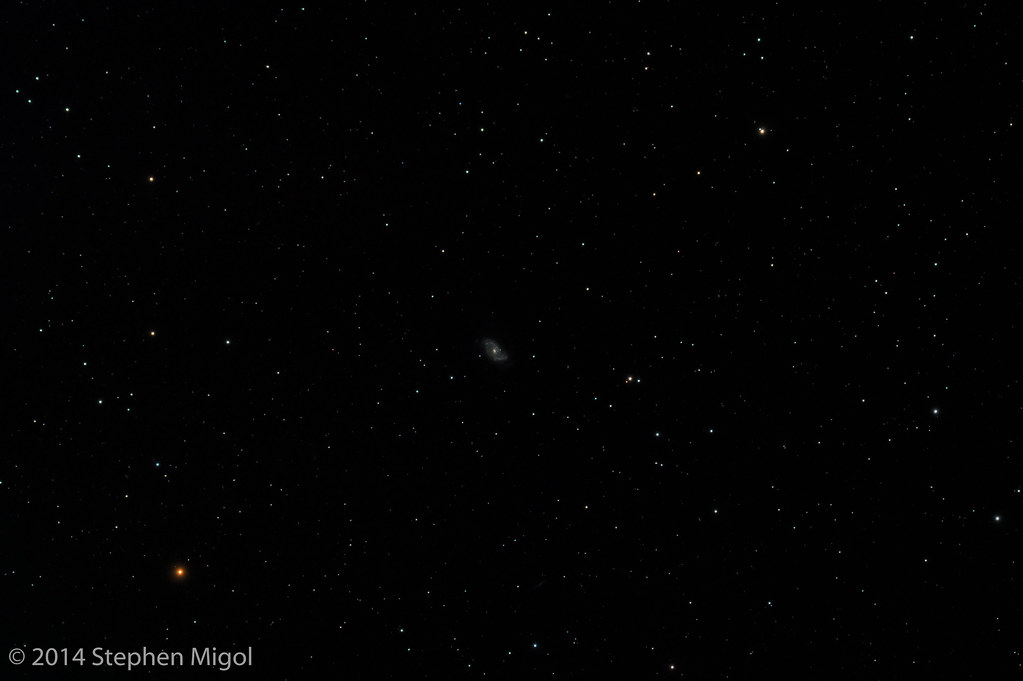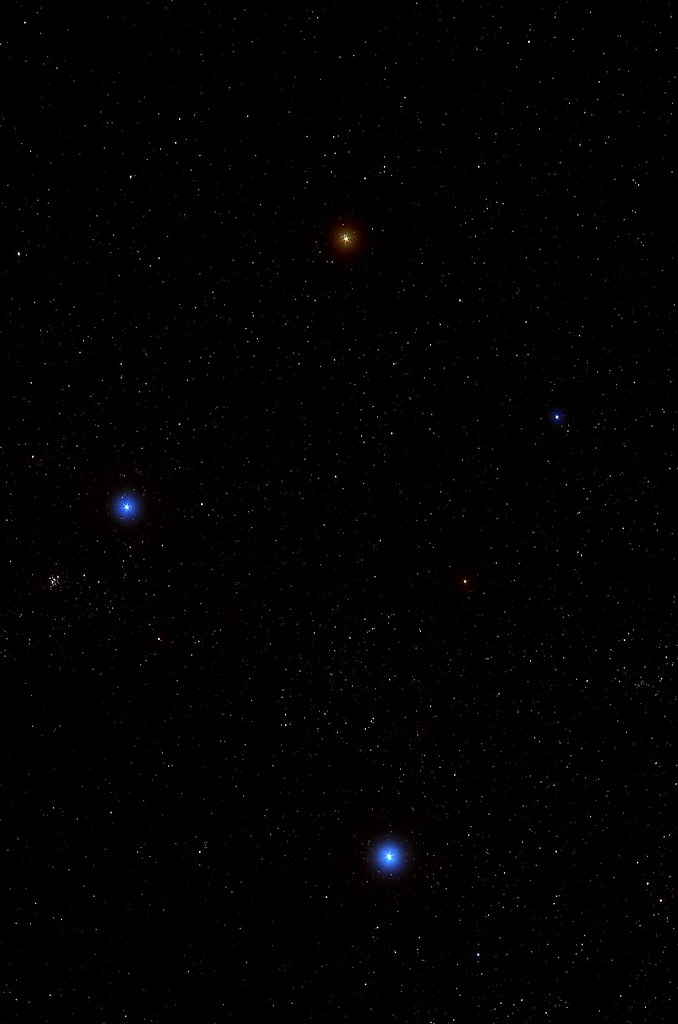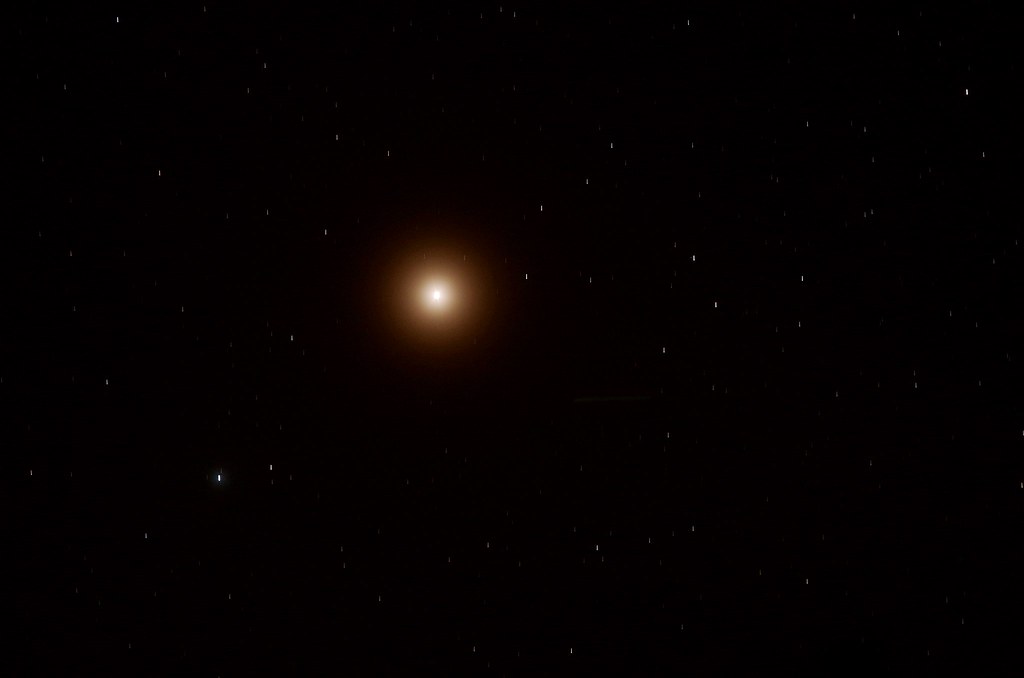 Originally posted by smigol
Originally posted by smigol 
A galaxy in the night sky as seen in the backyard. Done as a test ......
Well, I can never match the exquisite deep-sky detail that smigol and others can provide. But I do nevertheless find it rewarding to capture those tiny and faint patches of light, realizing that these photons have travelled for millions of years to be collected by my lens and captured on my sensor.
So, I have had certain hopes that the better spatial resolution of the K-3 sensor would benefit me in my hunt for these small galaxies, and here are my initial results.
All images have been taken with my smc Pentax-DA* 200mm f/2.8 lens.
First, just to test the general workings, a visit to Mars, currently residing in constellation Virgo:
.jpg)
Mars in Virgo. 6 exposures of 20s at ISO 3200 stacked in DSS. Clicki to see 20% view of original.
It was only as I developed my images that I found that I had actually caught - albeit only just and barely - my first deep-sky object, galaxy NGC 4941. But it is not "spectacular" by any measures so let's hasten on to Coma Berenices:
.jpg)
Region in Coma Berenices. 10 exposures at ISO 3200 stacked in DSS. Click to see 20% view of original.
The most prominent galaxies in this image are NGC 4565 to the south and NGC 4559 further to the north:
.jpg)
Spiral galaxy NGC 4559 in Coma Berenices. Click to see 100% view (crop of the above image)
.jpg)
Edge-on Spiral galaxy NGC 4565 in Coma Berenices. Click to see 100% view (crop of the above image)
I am happy to see that the overall shapes of these tiny galaxies are actually reasonably well rendered with my fairly modest 200mm lens and the K-3 sensor.
Finally a visit to Theta Leonis with is 'Leo triplet' of Galaxies:
.jpg)
Starfield with the Leo Triplet. Stack of 40 exposures of 20 seconds at ISO 3200 in DSS at apertures ranging from f/5.0 to f/.8.
Click to se 20% view of original.
.jpg)
The Leo triplet:Crop of the above image. Click to see 100% view.
Again, there is a reasonably well defined 'shape' to each of these galaxies. All in all, I think I shall be quite haqppy with my Pentax K-3 and O-GPS1 / Astrotracer combo.


 Similar Threads
Similar Threads 












.jpg)
.jpg)
.jpg)
.jpg)
.jpg)
.jpg)








 Post #1208 by mikeSF
Post #1208 by mikeSF








